Time, traffic and pollution take their toll on history
Her leaves play in the sunlight and breeze.
Flipping each elongated side up and down, looking for all the world like she is a child wiggling her fingers in the delightfulness of the day.
Sunlight bounces off leaves that are red, now green, then red again as the breeze dips them into shadow, changing color as only the unique leaves of a copper beech can.
Birds tweet above.
They flit from branch to branch, enjoying the solid feel of her arms, the smoothness of her bark.
Countless squirrels have raced her branches. Young ones learning to navigate their first tree fell many times from her arms to the soft ivy below.
There are no facelifts, no hiding of age for her. Every line and bump and crack show her age, giving her an elegance of survival, showing that the years have never been easy ones.
In places her bark is so smooth and clear, it is as if she were once again a young sapling first taking root.
Other areas show odd twists and scars and lines gathered in her 112 years of surviving storms, animals and children.
It was only eight years ago that she showed how strong she still was by destroying an entire sewer line and collapsing it. Her roots were smacked back and the line replaced with modern plastic pipe, but there is no doubt that she has been wrapping around it since then, trying to squeeze her way into the free-flowing nutrients inside.
In 1900, she was planted in honor of the birth of a little girl who was to become known as Pauline Griesinger-McClelland. It was Pauline’s father, Christian Griesinger, who planted her. At the same time, he planted an entire apple orchard about 200 feet away from the copper beech.
The story passed down within the Shepard-Griesinger family is that he was so happy to finally have a daughter that he ran out and planted the trees in her honor. I have always thought, though, that it might have been the screaming of his wife giving birth that drove him outdoors to plant!
Through the years, the copper beech, the apple trees and Pauline grew strong and then grew old together.
Pauline was known for tending to her flowers in the 30-plus gardens on the grounds. The gardens had been planted by her family in the 1880s.
As Pauline aged, she wanted to ensure the property and house would be protected. She knew her family’s home would be at risk when the time came that she would die. She was a ferocious guardian of the home her family had lived continuously in for 100 years of its existence.
Being a corner property, it had long attracted the interest of local developers . One of the developers who was particularly anxious to gain possession of the property was well known in the area for “demolition by neglect”, where he would allow the property to decay beyond repair, then shrug and tear down the building.
While Pauline had other family members, they had spread out and had their own lives and homes and no one wanted to return to the house. Her death would mean it was time for a new family. She would leave the task of finding the new family to her survivors.
Through Pauline’s efforts, the house and grounds gained official historic status and were listed on the National Register of Historic Places. The house had been a station on the Underground Railroad in the 1850s and it was that, combined with its importance to the community, that gained it recognition.
By the time Pauline died at the age of 86, the apple orchard was long gone. Yet, the copper beech continued to grow and flourish by the side of the house so long loved and cared for by Pauline.
Pauline’s remaining family members, in honor of her wishes to preserve the property, had a restriction placed on the deed that kept the property from being subdivided. This action ended the developers’ interest in the property.
About 14 years after Pauline’s death, the copper beech gained recognition from American Forests for being a historic tree.
Now, sadly, the copper beech’s life also has come to an end.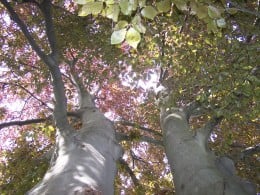
The effects of time and pollution and the intense increase of traffic on the road over her roots has taken their toll. She has rotted from the roots up. The depth of her illness was discovered this spring.
As snow and freezing temperatures gave way to warmer breezes and dancing sunlight, a large piece of the copper beech’s bark also gave way and revealed a huge hole in her main trunk.
The hole in the trunk goes two thirds of the way around, and the rot has extended well above the hole and below as well. Tree companies were called in to rescue her but there is to be no second chance.
Despite her illness, seed pods can be seen among her leaves. She tries every year, despite having been infertile for at least the last 10 years.
It is a period of deep mourning as an old friend leaves. Not quietly in the night, but violently with saws and the cracking of limbs and a crane to carry her away in pieces.
Today she stands in noble grandeur, twice the height of the house. Her leaves playing in the sun and breeze, stroking my cheek as I pass.

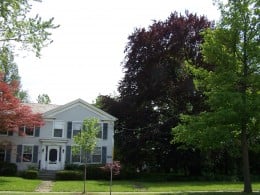

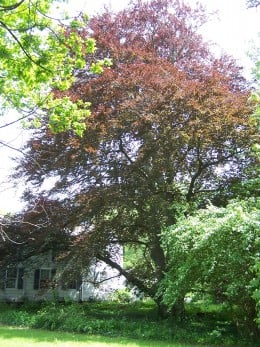

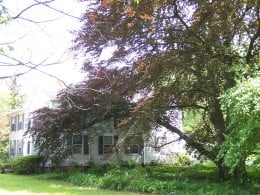


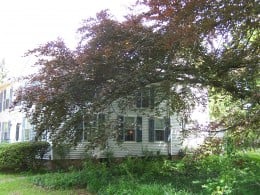
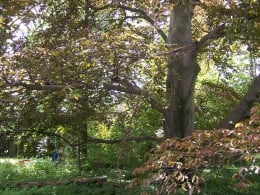
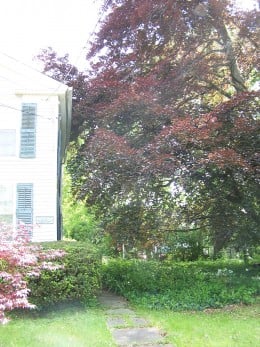
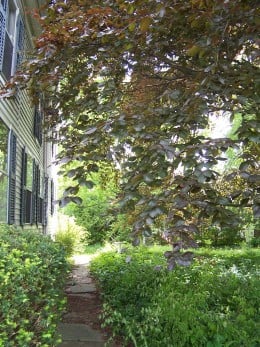


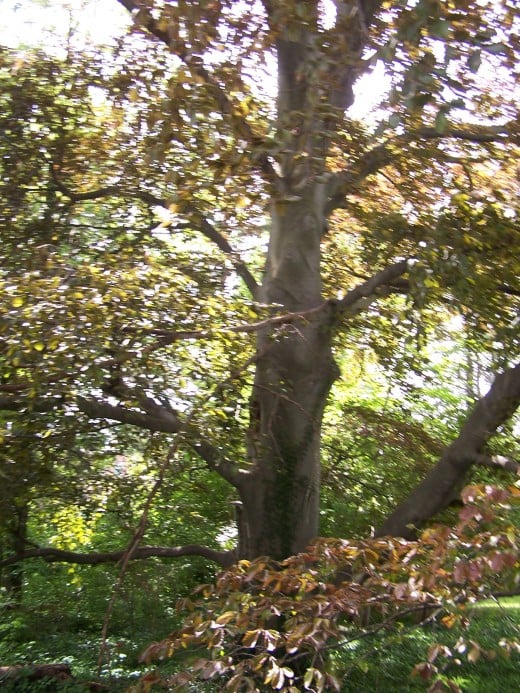
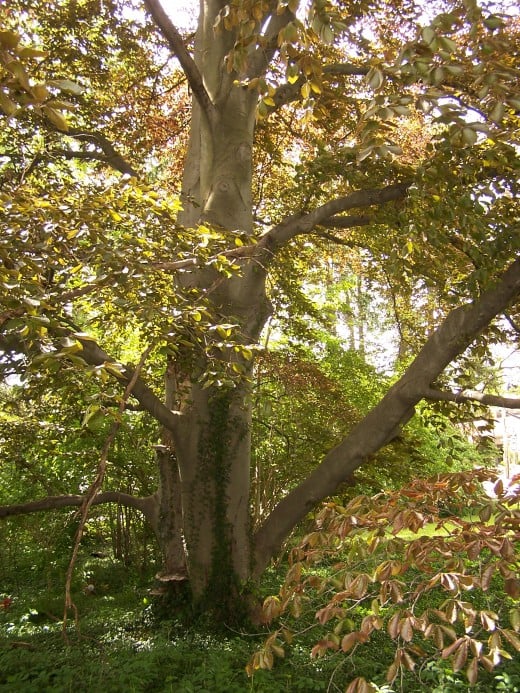

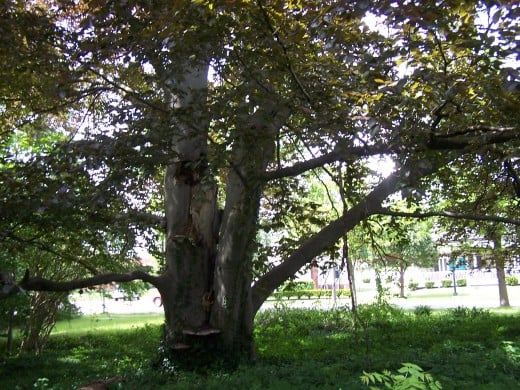
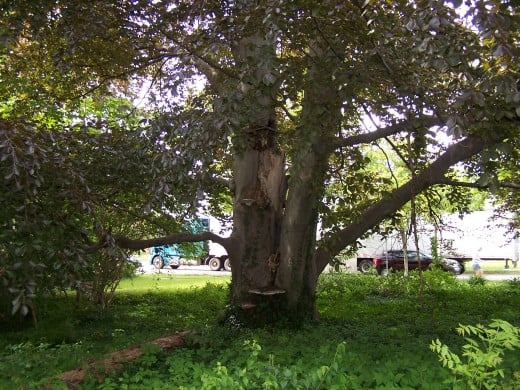



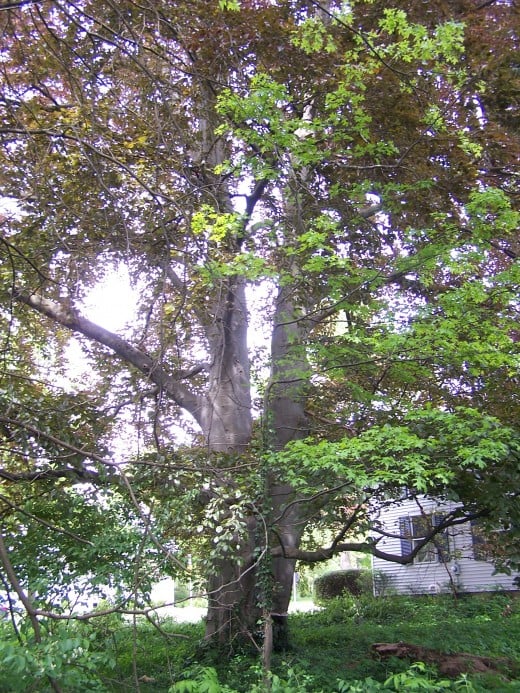
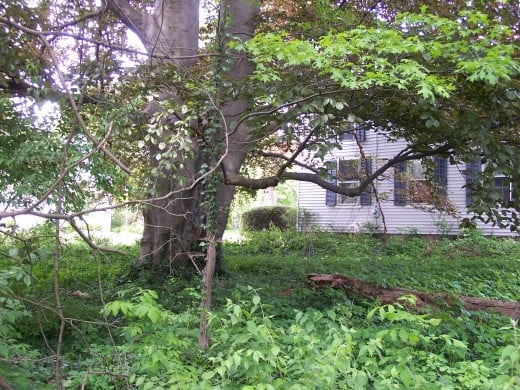
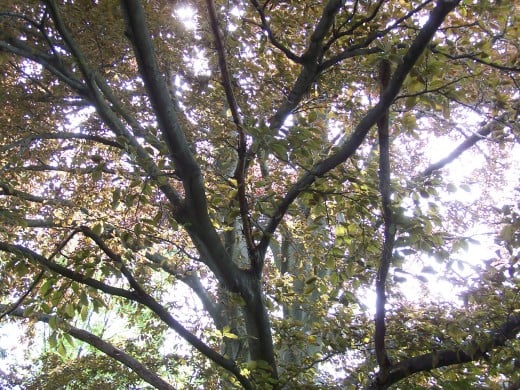


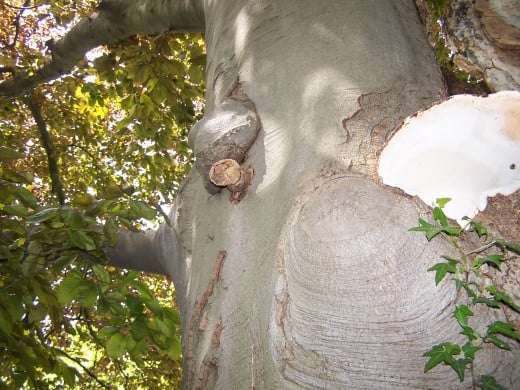
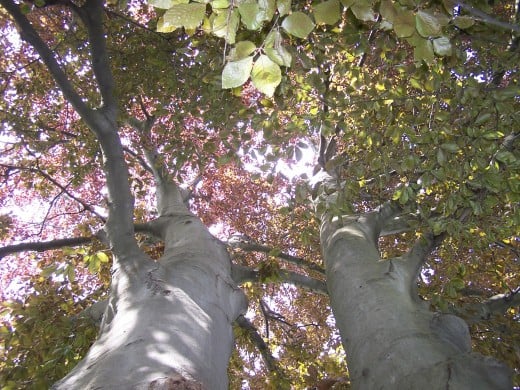
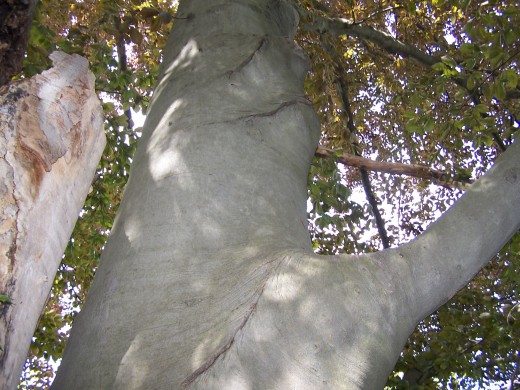
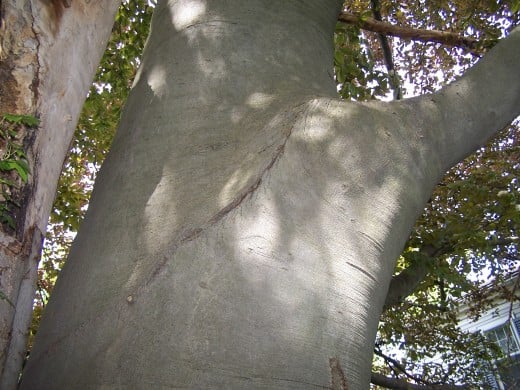



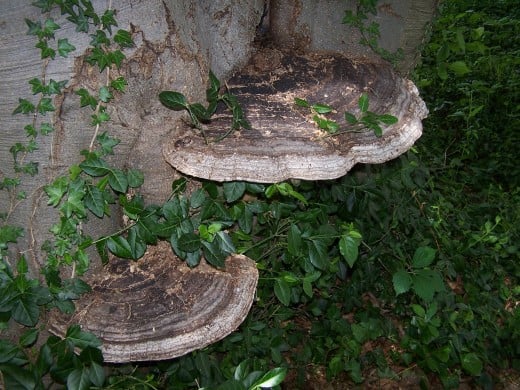
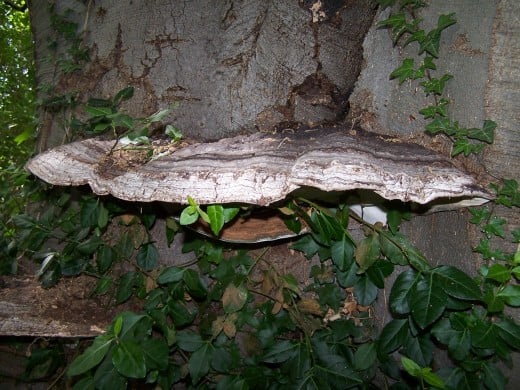
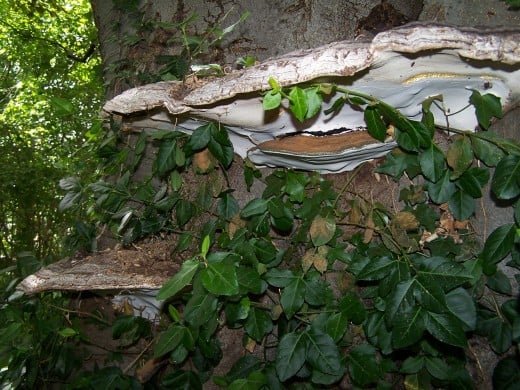


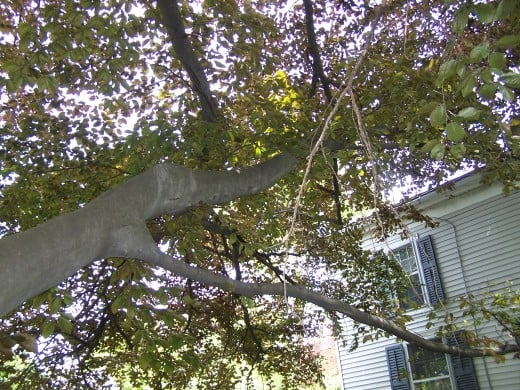
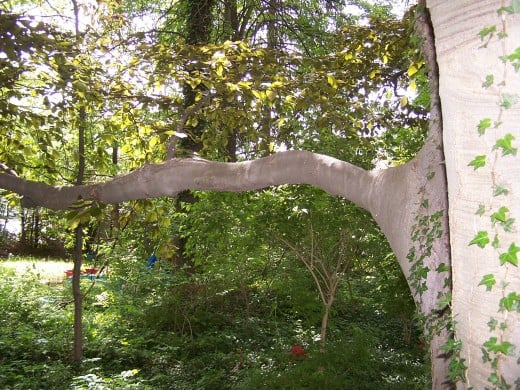

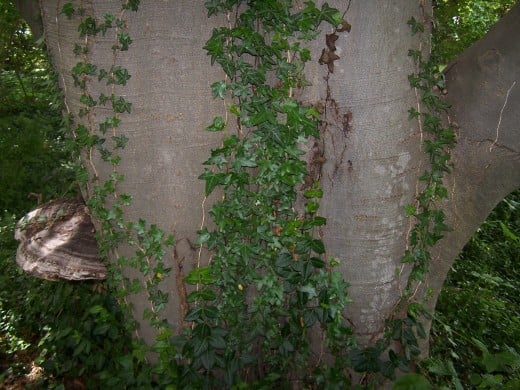
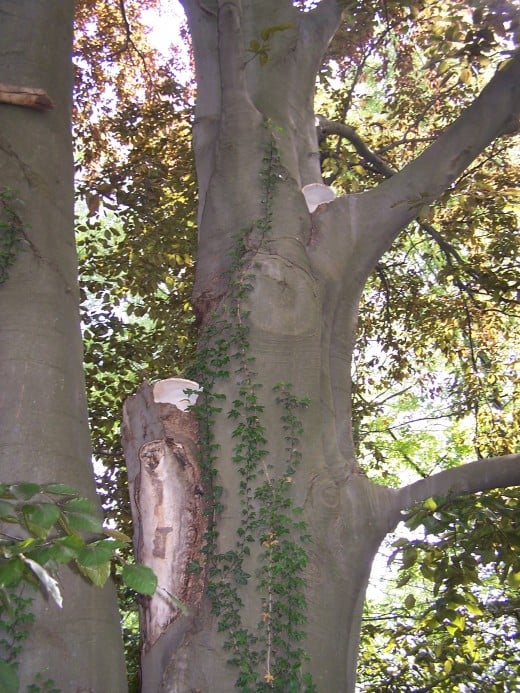
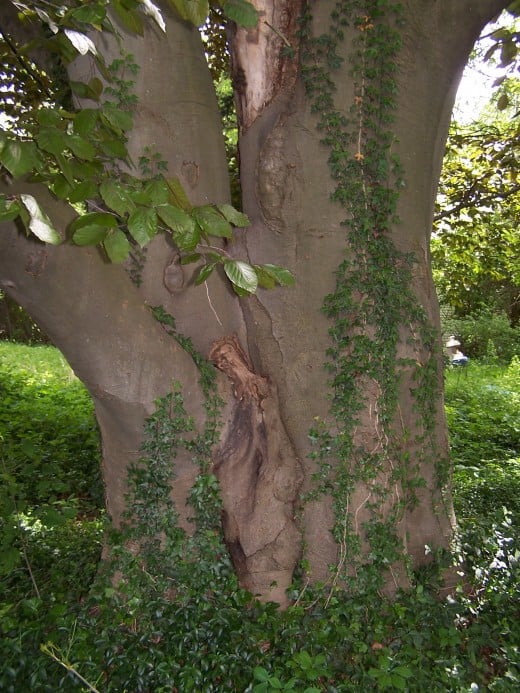
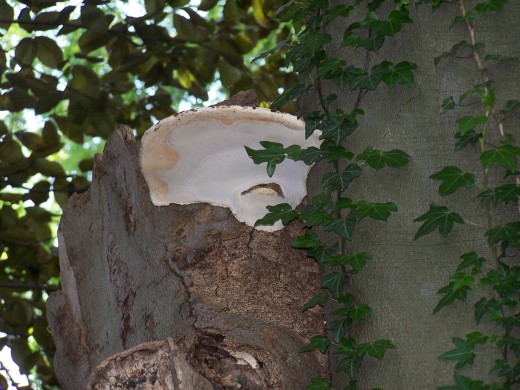
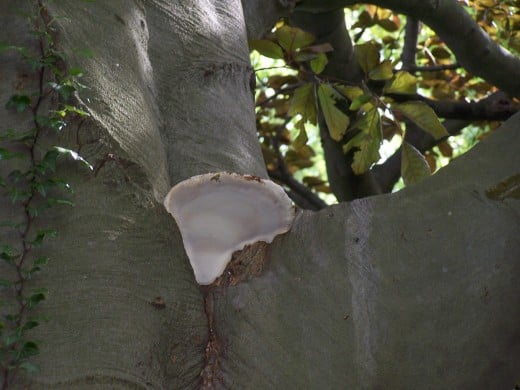
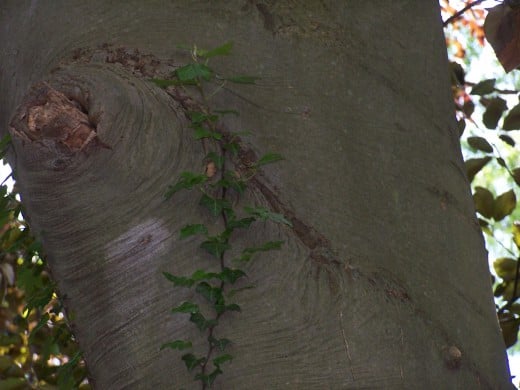
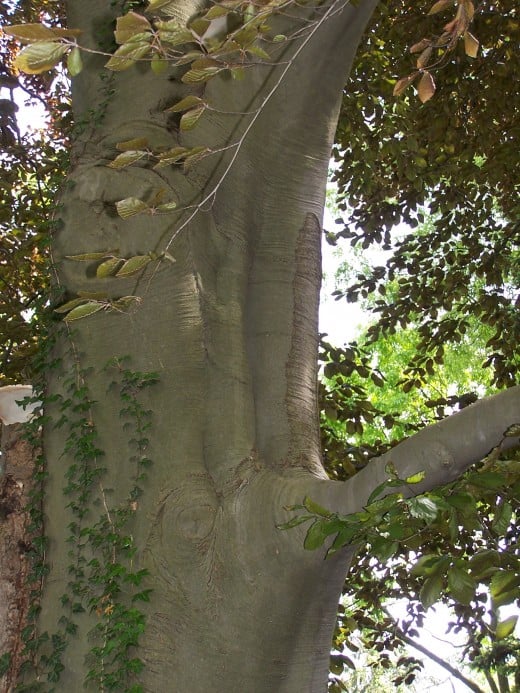


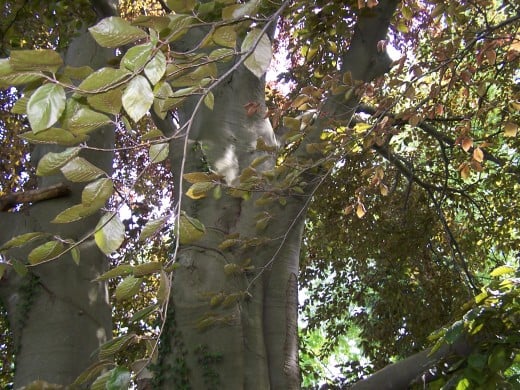
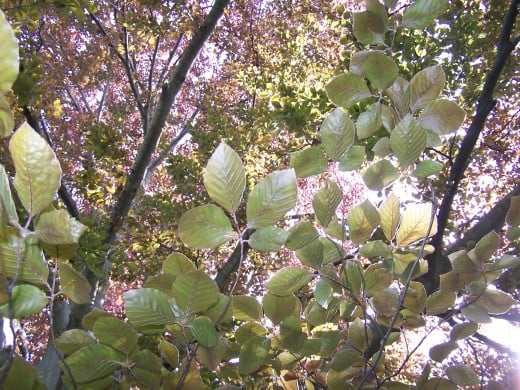
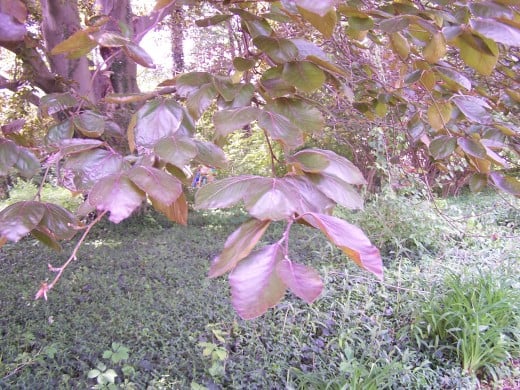
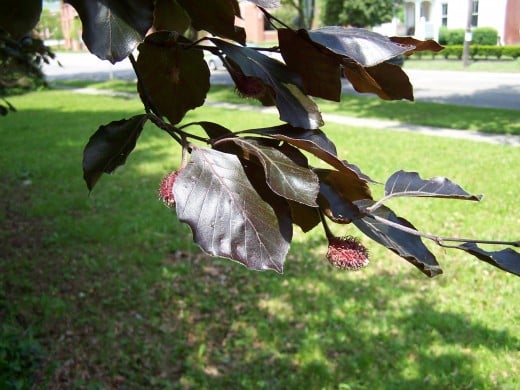
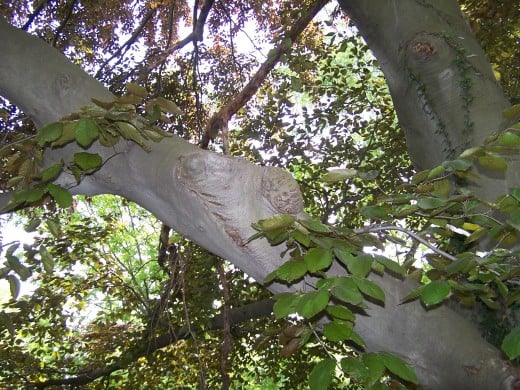


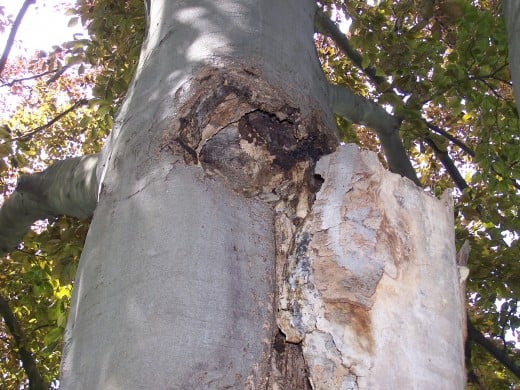
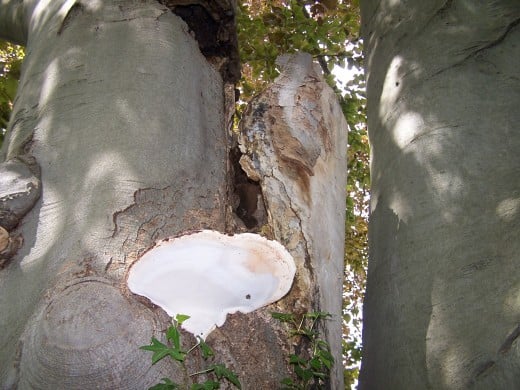

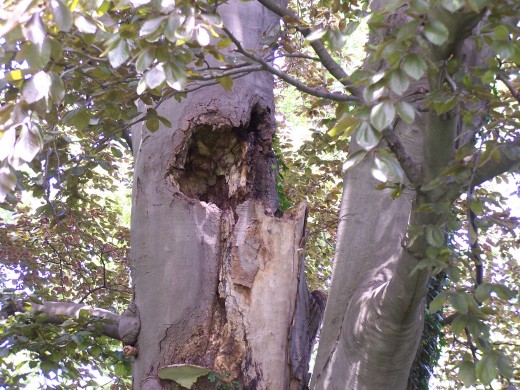
It took only 6 hours to take down this beautiful 85-foot tall tree. If you would like to see how it was done, please see the post Cutting Down 112 Years of Tree History in One Day.
Copyright 2017 A. Barnes | All Rights Reserved.
Thank you so much, Nancy, for your kind words and love through this very difficult time. I am deeply honored by your friendship and guidance.
Dear Amy,
Thank you so much for memorializing the tree under which I played as a girl. I am Pauline’s grand niece and was named for her mother, Mary Shepard Griesinger, who tended the gardens at 314. That love of trees and plants has extended down my branch of the family as well. My daughter has certainly caught it and I hope her son has as well, though at 3 1/2 it’s too early to tell. Our family is so grateful that the house and the tree are in such loving hands.
Dear Mary,
Thank you for the additional family history and encouragement! I am honored to preserve and promote a part of your family’s history and to safeguard the home.
There is a very strong feeling of history and connectedness here that can not be reproduced and that my family and I value highly.
My connection with all this is through my wife, Jane, sister of Bennett Wilson, late husband of Nancy. Jane and I often dropped by to see Pauline and Mac during our many visits to Medina, and always admired this magnificent tree. It is so sad that it is no more; I had thought that it would be there forever. However, I am happy to report that, in a sense it lives on: in one of our many visits to Medina, back, I think, in the 70s, Pauline dug up a very young descendant of this copper beech as a treasured gift to us. We transported it back to West Lafayette, Indiana, in the trunk of our sedan, and planted it in our yard. It has thrived here: I can’t really estimate its considerable height, but its girth at about four feet from the ground is 40 inches, making its diameter well over a foot. It is far and away the most beautiful plant growing in our yard!
Thank you so much for sharing your memories of this most beloved tree. It seems her reach was far beyond her branches.
Should your tree ever have offspring, we would love to have one to plant here, this time in the back of property where the apple orchard once was.
For the exact spot where the copper beech grew, we are looking to plant a mahogany tree. I know that they grow in Connecticut, I have a feeling that one would do very well in the beech’s former spot.
After the beech had been taken down, I measured across the trunk base that remained in the ground. It measured 6 feet wide by 4 feet 1 inch.


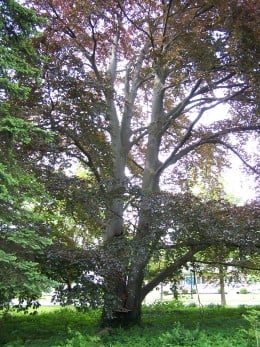

Nancy McC. Wilson 4 years ago
I am daughter of Pauline who was born in the Western Reserve farmhouse beside the copper beech, which will be taken down on May 15. My mother’s lifelong affection for trees is surely linked to the history of that eminent tree. Her loyalty has entered the family gene pool, and has shown up in me, my daughter, and my 17-year old granddaughter. It is wondrous beyond belief that Amy, the present owner and steward of that property, an in-town mini farm a block from the town common, shares this gene of love for this mighty old tree and will be there holding its branched hand as if falls this week. Thank you, and our deep sympathy to you, Amy. Through your words, the story of this tree will last.